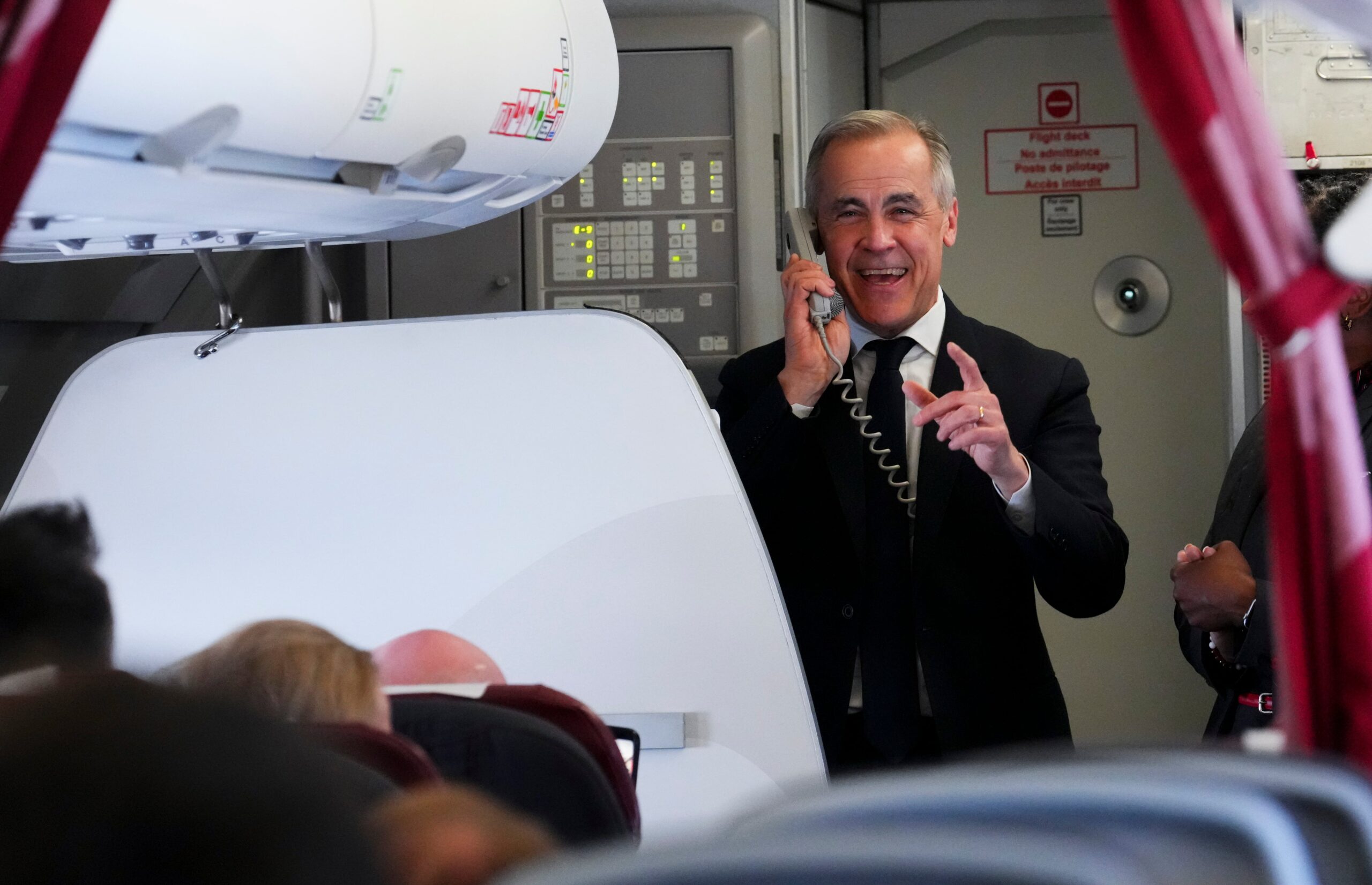Business
Carney Faces Criticism Over Air Canada Strike Response

Prime Minister Mark Carney is under scrutiny following a controversial back-to-work order aimed at resolving a strike by flight attendants at Air Canada. The order was met with defiance from the union, leading to significant criticism of Carney’s government as it grapples with the implications of this labor dispute.
Carney expressed disappointment when the Canadian Union of Public Employees (CUPE) announced its intention to ignore the government’s directive. His restrained response, which did not assign blame to the union, highlighted an understanding of the complex dynamics in labor relations. The Prime Minister’s advisors signaled that he expected more proactive measures from his ministers, particularly Patty Hajdu, the Minister of Employment, Workforce Development and Disability Inclusion.
The swift back-to-work ruling issued by the Canada Industrial Relations Board raised eyebrows, particularly given the appointment of its new head, Maryse Tremblay. Tremblay’s past connections as an attorney for Air Canada have led to accusations of bias, with union representatives questioning the integrity of the decision-making process. This situation reflects broader concerns about the relationship between the airline and the federal government, which many believe has historically favored Air Canada.
The airline’s privatization in 2000 was accompanied by specific regulatory requirements, including maintaining overhaul centers in designated cities. The Quebec Court of Appeal ruled in 2015 that Air Canada had violated the Air Canada Public Participation Act by failing to uphold these commitments. In a controversial move, the government led by Justin Trudeau passed Bill C-10 in 2016, retroactively amending the law to absolve Air Canada of its violations.
This week’s events have underscored a prevailing sentiment that Air Canada operates with undue entitlement. The union’s national president, Mark Hancock, took a bold stance by publicly rejecting the back-to-work order, a move many view as a reflection of the growing public support for the flight attendants. Hancock, known for his measured approach, recognized an opportunity to align with public sentiment, which largely favors the rights of workers.
In response to the backlash, Carney’s administration worked to bring both parties back to the negotiating table. Following a night of serious discussions, an agreement was reached that addressed key issues, including compensation for unpaid work. While this resolution may mitigate immediate concerns, it leaves lingering frustrations for the thousands of travelers affected by the strike.
The fallout from this incident reveals important lessons for Carney and his cabinet. Labor rights are enshrined as Charter rights in Canada, with the Supreme Court affirming that unionization and collective bargaining are extensions of freedom of association. Carney had previously asserted the government’s commitment to the Charter, but the handling of the Air Canada situation raises questions about the administration’s dedication to these principles.
Moreover, the necessity of fostering cooperative relationships with unions and other social partners has become increasingly evident. As the government embarks on significant restructuring measures, the absence of social peace can derail progress. Carney’s ambition to implement transformative changes for Canada hinges on the support of a united labor front.
As public trust remains crucial, the missteps in handling the Air Canada strike serve as a poignant reminder for Carney’s team. The Prime Minister must respond to these challenges with humility and a renewed commitment to equitable labor practices, ensuring that the rights of workers are respected moving forward.
-

 Education3 months ago
Education3 months agoBrandon University’s Failed $5 Million Project Sparks Oversight Review
-

 Science4 months ago
Science4 months agoMicrosoft Confirms U.S. Law Overrules Canadian Data Sovereignty
-

 Lifestyle3 months ago
Lifestyle3 months agoWinnipeg Celebrates Culinary Creativity During Le Burger Week 2025
-

 Health4 months ago
Health4 months agoMontreal’s Groupe Marcelle Leads Canadian Cosmetic Industry Growth
-

 Science4 months ago
Science4 months agoTech Innovator Amandipp Singh Transforms Hiring for Disabled
-

 Technology4 months ago
Technology4 months agoDragon Ball: Sparking! Zero Launching on Switch and Switch 2 This November
-

 Education4 months ago
Education4 months agoRed River College Launches New Programs to Address Industry Needs
-

 Technology4 months ago
Technology4 months agoGoogle Pixel 10 Pro Fold Specs Unveiled Ahead of Launch
-

 Business3 months ago
Business3 months agoRocket Lab Reports Strong Q2 2025 Revenue Growth and Future Plans
-

 Technology2 months ago
Technology2 months agoDiscord Faces Serious Security Breach Affecting Millions
-

 Education4 months ago
Education4 months agoAlberta Teachers’ Strike: Potential Impacts on Students and Families
-

 Education3 months ago
Education3 months agoNew SĆIȺNEW̱ SṮEȽIṮḴEȽ Elementary Opens in Langford for 2025/2026 Year
-

 Science4 months ago
Science4 months agoChina’s Wukong Spacesuit Sets New Standard for AI in Space
-

 Business4 months ago
Business4 months agoBNA Brewing to Open New Bowling Alley in Downtown Penticton
-

 Business4 months ago
Business4 months agoNew Estimates Reveal ChatGPT-5 Energy Use Could Soar
-

 Technology4 months ago
Technology4 months agoWorld of Warcraft Players Buzz Over 19-Quest Bee Challenge
-

 Business4 months ago
Business4 months agoDawson City Residents Rally Around Buy Canadian Movement
-

 Technology4 months ago
Technology4 months agoFuture Entertainment Launches DDoD with Gameplay Trailer Showcase
-

 Technology2 months ago
Technology2 months agoHuawei MatePad 12X Redefines Tablet Experience for Professionals
-

 Top Stories3 months ago
Top Stories3 months agoBlue Jays Shift José Berríos to Bullpen Ahead of Playoffs
-

 Technology4 months ago
Technology4 months agoGlobal Launch of Ragnarok M: Classic Set for September 3, 2025
-

 Technology4 months ago
Technology4 months agoInnovative 140W GaN Travel Adapter Combines Power and Convenience
-

 Science4 months ago
Science4 months agoXi Labs Innovates with New AI Operating System Set for 2025 Launch
-

 Technology4 months ago
Technology4 months agoNew IDR01 Smart Ring Offers Advanced Sports Tracking for $169










